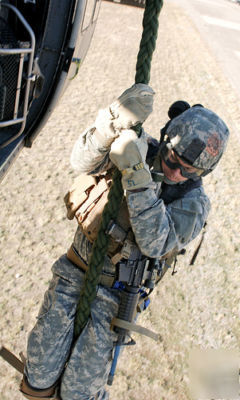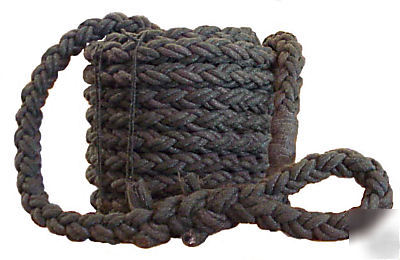Environmentally Conscious and Economically Sound Machine Dismantling Forum > Madison, WI
> Welding and Laser Cutting
> Fast rope heli-vac special forces swat
Fast rope heli-vac special forces swat
HELI-VAC FAST ROPE SYSTEMS provide efficient and safe methods for infiltrating and evacuating special operation personnel to and from point targets.
A special low stretch, abrasion resistant fiber, Dacron M/P Type 77* and Pli-Moor construction eliminate rope hockling or kinking, resist heat build up during
use, and afford fast, fully controlled descent and safe, sure assent.
The FAST ROPE SYSTEMS were developed in the U.S. during the mid 1980 s in a coordinated effort with our nation s military and law enforcement services.
In 1990, Columbian along with the U.S. Army Natick RD Center in Natick, MA authored and developed the only FAST ROPE mil-spec which is still in use
today, Military Specification MIL-F-44422 Fiber Rope Assembly, Insertion.
More Information on Fast-roping is a technique for descending down a thick rope. It is useful for deploying troops from a helicopter in places where the helicopter itself is unable to touch down.
It is quicker than rappelling because you eliminate the need for getting in and out of a rappelling seat (harness) and connecting to the rope via a carabineer. If you are carrying a heavy load there is a tool that will let you get the same benefits / drawbacks as a more traditional rig. In Fast-roping the person simply holds onto the rope with his or her hands and feet and slides down it. Braking is achieved by twisting your hands in a towel rigging method. One of the big benefits of this system is that more than one person at time can be on the rope (proper spacing required) which allows you to move more to and from a helicopter or tall structure the ground in the shortest time possible. Fast roping is normally done at a height of 30 ft off the ground or roof using a 60 foot rope which leaves plenty of extra rope for variations in helicopter height above the ground. The ropes are required to be thick since light ropes are easily blown about by helicopter rotor blast and to allow for a larger surface area for the gloved hand that more quickly dissipates heat caused by friction.


